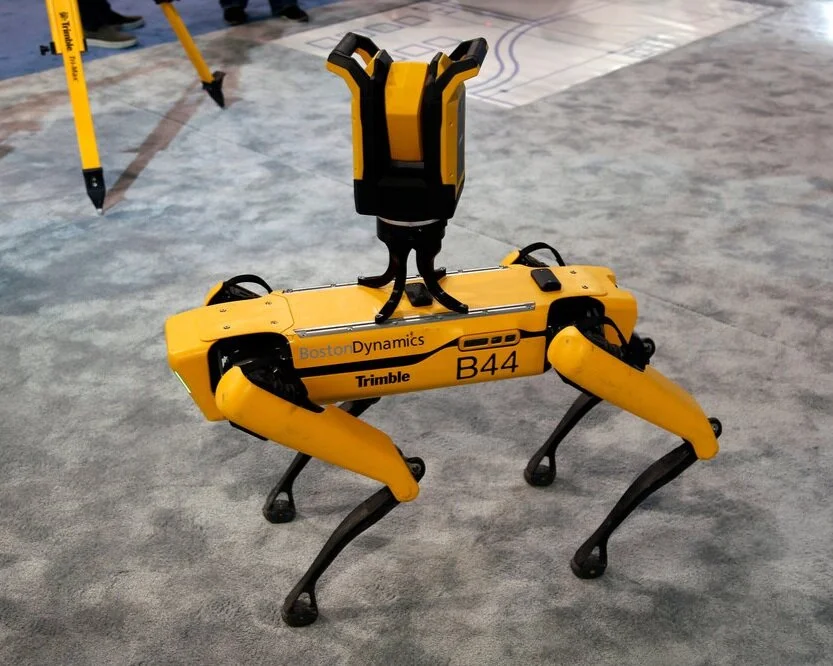Artificial Intelligence Advances the Battle Against COVID-19
/Many countries have put their best ideas and creations to the test prevention measure to halt the spread of COVID-19, specifically in the realm of technology. Artificial Intelligence and robots are leading the way in countries putting new tech to new tests. The company “PUDU” allowed China to do trial runs on robots, that could deliver food to patients and other citizens in Wuhan during the rigorous quarantine period earlier in 2020.
BlueOcean robotics also sent a hoard of "UVD Robots" there, which CEO Claus Risager said, "use advanced algorithms and specialized sensors to cover all surfaces with the right amount of (virus killing) light. With this data, users can see exactly which rooms have been cleared of bacteria and viruses." These robots can complete their jobs in as little as 10-15 minutes, including their ability to reach places some humans previously couldn't. These robots are more effective in the prevention of the Coronavirus spread. First, they reduce the risk of a person becoming exposed to the virus while disinfecting an area, and they have a higher success rate in successfully decontaminating every surface and crevice of these high-risk areas.
Hong Kong has even hired these similar types of robots to assist in keeping the Hong Kong Mass Transit Rail System. Vaporizing hydrogen peroxide robots are cleaning trains and specific areas where citizens could most likely become infected due to exposure to asymptomatic carriers, or contaminated metal and plastic surfaces on which the virus can survive for several hours if not days.
Network Communication programs are using technology like "Telegram" and "Facebook" to provide an open forum for ideas to flow from engineers and other professionals using their skills to help healthcare workers see assistance in loads of accessing ventilators and masks. In fact, low efficient technology has appeared to be highly volatile in allowing virtually any and everyone to help. Face masks that have been produced locally with the help of clothing designers. These masks are distributed with a simple "Do It Yourself" instructions on social media, and even groups have dedicated their clothing manufacturing skills to gather and mass-produce masks for local hospitals.
Engineering groups have also been able to take part in helping healthcare professionals by using 3-D printing to design respirators and ventilators. A group in Spain recently assembled an open-source respirator proto-type. An Irish open-source hardware project has also produced a prototype ventilator using three-dimensional primed materials and readily available inexpensive parts. Facebook's spin attraction propelled these projects in seven days to reach more than 300 engineers, medical professionals, and researchers.
Artificial Intelligence has proven to be very useful in detection and issuance. BlueDot, a Canadian startup, has produced Artificial Intelligence that analyzes governments and news reports, along with social media, to assist in tracking infectious at blazing speed. BlueDot had already shown its ability to process information and make appropriate claims, when on January 25th this year, it issued a warning beating the Center for Disease Control and the World Health Organization. It takes into account every possible outcome, from air travel, populations in distinct areas, climate, mosquitos, demographics, and a countries inherent ability to respond, are all included in assisting the A.I. comprehend where it will spread along with its impact.
Jack Maas of Alibaba, is also developing artificial intelligence diagnostic systems that process C.T. scans with 96% accuracy. We also see that this machine can also ease the time of reading this information, dropping dramatically from fifteen minutes to twenty seconds.
COVID-19 has had no problem showing its tenacity, but so have countries across the globe like Hong Kong and Spain, for example, using both high and low efficient technologies from robots to masks. Medical professionals, engineers, and researchers are now working in a way that no longer has any boundaries, while still practicing "Social Distancing." Thanks to technology and global participation in fighting COVID-19, we can use these innovations for future developments in society and hopefully be better equipped to prevent another mass spread, as large as the one we are witnessing now with the Coronavirus.
RELATED ARTICLES
10 technology trends to watch in the COVID-19 pandemic (weforum.org)
CRISPR-based technology spots COVID-19 (news.harvard.edu)
Digital technology and COVID-19 (nature.com)
Roundup: Tech's role in tracking, testing, treating COVID-19 (mobilehealthnews.com)













